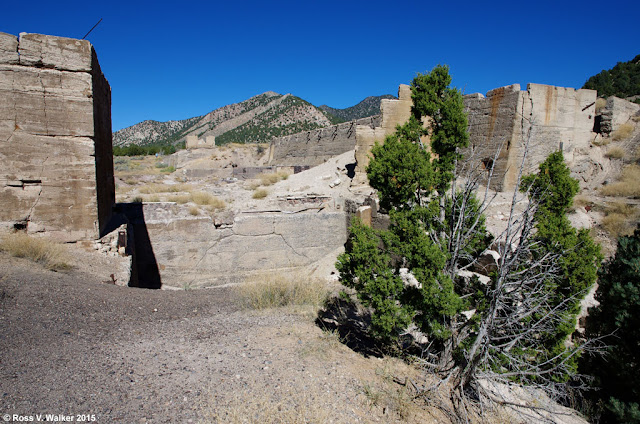 In October 2015 I went on a fall camping trip with my
California photography friends. We met
in Ely, Nevada then traveled to Delta, Utah to explore Topaz Japanese
Internment Center (see the next post) and the Tintic Mining District. The last stop was Fremont Indian State Park,
Utah, to photograph the Kimberly Mining District and rock art at the Park.
In October 2015 I went on a fall camping trip with my
California photography friends. We met
in Ely, Nevada then traveled to Delta, Utah to explore Topaz Japanese
Internment Center (see the next post) and the Tintic Mining District. The last stop was Fremont Indian State Park,
Utah, to photograph the Kimberly Mining District and rock art at the Park.
The Fremont Indians lived in central Utah and the
surrounding area from about 400 A.D. to 1300 A.D. It is likely that there were several
different tribes, and they may have even had different languages, but their
rock art and artifacts set them apart from the nearby Anasazi tribes. Their culture was named for the Fremont
River, which was in turn named for explorer John C. Fremont.
There are hundreds of rock art panels in the park, and we
explored several different sites. One of
the most interesting is the Beginning of Life panel located in the Canyon of
Life. Rock Art interpretation is an
inexact science, but a Park trail guide states that this petroglyph describes
the shape of the canyon and a legend about the sun conceiving life from the
east and the west. Briefly, the sun is
shown with its rays, and the center hole represents a natural tunnel in the
east side of the canyon. The sun
penetrated the hole and conceived life.
At noon on the summer solstice, a dagger of sunlight goes from the
center of the hole to the outer rim of the circle.
The park is in a beautiful location with red rock cliffs, a
creek, and views of the Tushar mountains.
We were there in autumn and I enjoyed the fall color in Sam Stowe Canyon
and the brilliant squawbush leaves on the Cave of a Hundred Hands trail.
Petroglyphs along the Parade of Rock Art trail are the most accessible
in the park. This hunting scene shows
bighorn sheep, which are common rock art subjects throughout the Fremont
culture. But excavations turn up lots
more deer, waterfowl, and rabbit bones than sheep. Were superstitious artists trying to make the
sheep easier to kill by pecking their images in the rock? Or was a rare successful sheep hunt a reason
to brag by creating sheep petroglyphs?
There are also much newer Paiute petroglyphs on the Parade
of Rock Art trail. What could have
inspired this “alien” figure? It was
probably created in the late 1880’s.
Older petroglyphs are gradually darkened by oxidation called desert
varnish, and since this has no desert varnish we know it is much newer than the
Fremont petroglyphs.
The Court of Ceremonies trail is a little more challenging;
with a short rock scramble and a brief climb to a ridge that has a good view of
the visitor’s center and the Tushar mountains.
There are several interesting anthropomorph (stylized human figure) petroglyphs
on the cliffs along the trail.
We also explored the Arch of Art and Sheep Shelter rock art
locations, and there were many others that we didn’t get to. This park is a great place for a family trip to introduce kids to interesting western art and history. If you would like to see more photos, my
Flickr album is here:
Please note that my photographs are all copyrighted and must
not be used for any purpose without my permission.

















































